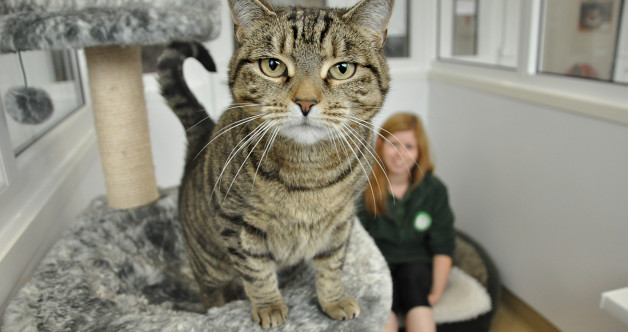Case study: Edinburgh Dog and Cat Home
Background
Located in Seafield, Edinburgh, Dog and Cat Home (‘the Home’) is part of the fabric of the city working in partnership with the Council and Police services, members of the public and wider community by welcoming lost, stray and abandoned pets from all corners of Edinburgh and the Lothians. The Home believes that every animal deserves to live in comfort and safety and has an open-intake policy, accepting any dog or cat in need, whatever shape, breed or size they may be.
The Home’s success rate in reuniting lost dogs and cats with their owners is around 70%, meaning that happy endings are common at Edinburgh Dog and Cat Home. When an owner cannot be found after seven days, the rehoming process kicks in. This is a structured programme which aims to make the best possible match between pet and human.
The Home commissioned Scotland to assess awareness of the charity and its services amongst residents of Edinburgh and the Lothians and to tests out levels of interest, amongst pet owners, in proposed new services.
Purpose
The study aimed to gain insight into public perceptions of Edinburgh Dog and Cat Home and specifically to:
- assess to what extent the full range of services offered by the Home are widely known and understood
- identify the likelihood of supporting the Home through use of its services and/or donating money
- identify the most appropriate marketing channels and key messages to better communicate the Home, its aims and services.
Methodology
To meet the study objectives we used Mosaic Scotland, along with quantitative and qualitative research.
Using Mosaic Scotland we profiled the Home’s current and lapsed supporters against the profile of the population of Edinburgh and East Lothian. The postcode data from the Home’s contacts database enabled us to provide a detailed profile of supporters based on the standard Mosaic segments. Information relating to the key segments identified the demographic profile (including age, household income, household composition, number of children, household tenure), internet usage, communication preference and leisure activities.
The locations for quantitative research (which took the form of face to face surveys) were informed by the Mosaic profiling and took place in Edinburgh city centre as well as East and West Lothian. Respondents were eligible to take part in the study if they were ‘warm’ to the Home in that they currently had, or had previously had, care of a dog or cat at some stage and/or consider themselves to be dog or cat lovers.
Online group discussions provided the opportunity to find out more about how the Home was perceived and to explore the potential for new services. This forum enabled participants to take part regardless of their location (they were spread across Edinburgh and the Lothians) and for stimulus materials to be shared and discussed. The Home’s personnel logged in to see the discussion unfold and prompt us when they wanted Scotinform to explore specific and/or additional issues in greater detail with participants.
Impacts
As a result of the research findings, the Home decided to focus its efforts on increasing awareness of its key role and services rather than looking at ways to diversify using the findings of the research. Our research had highlighted that awareness of the charity’s services was low and the opportunity existed to build on this to create more interest and increase donations for its work.
The research also informed the charity’s marketing strategy to develop effective communication for supporters and potential supporters, as well as providing information about where they might live through the Mosaic profiling.
“Edinburgh Dog and Cat Home has a long and rich history of rescuing, reuniting and rehoming dogs and cats across Edinburgh and the Lothians. However, over the years we have done very little to promote our work as a charity. We engaged Scotinform to help provide us data on who already supports the Home, along with research into the public’s awareness and perception and what services they would like to see the Home offer. The data provided has been key in helping us form decisions around campaign planning and future service provision. Working with Sheena and Helen was a delight and they are both extremely knowledgeable and passionate about their work. I would recommend their services to any organisation looking to understand their customer base and refine their marketing”
Nicola Gunn, Director of Development and External Affairs, Edinburgh Dog and Cat Home
Why Scotinform?
We have extensive experience working with the charitable sector helping charities to identify their current and potential supporters and how best they can boost fundraising.
We are flexible in our approach ensuring that the methodology is the right fit and are happy to adapt our research design accordingly. Our aim of working with, rather than for, our clients means we quickly get to grips with an organisation and identify which research work it needs to inform future developments and strategy.
We can select from a range of methodologies (Mosaic, qualitative or quantitative) based on the characteristics of the audience and the research needs of the client. We don’t stop with the research findings. We will prepare conclusions and recommendations based on the results, as well as on our experience of the sector more widely.
